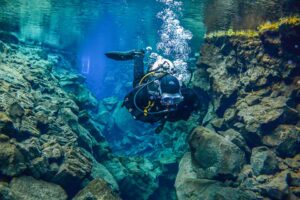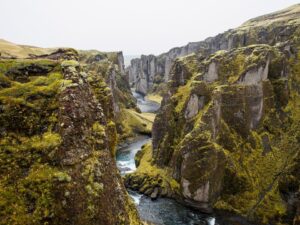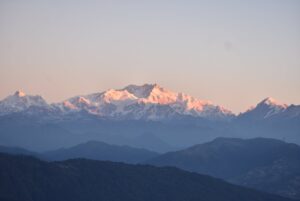
About 3.3 – 3.5 billion years ago, the process of formation of tectonic plates and moving was started. Since then, these tectonic plates are keep moving. This moving process is called continental drift. It is a concept that was published by Sir Alfred Wegener using 5 pieces of evidence. But he couldn’t explain the reasons for the movements. In 1960, a group of geophysicists, a new theory called The Plate Tectonic Theory. A tectonic plate is a massive, irregular-shaped slab of solid rock generally composed of both continental and oceanic lithospheres. They said that those large tectonic plates were floating on a semi-solid layer called Asthenosphere. Due to the convection current of the upper mantle and the asthenosphere. For this process, the required heat is supplied by the inner and outer core of the earth. Because of this process, tectonic plates are moved since they were formed. Plate boundaries are the edges where 2 plates meet. Those are very busy places with geological activities like volcanic eruptions, earthquakes, formation of faults, and mountain building. According to the relative motion of nearby tectonic plates, there are 4 types of plate boundaries. They are convergent plate boundaries, divergent plate boundaries, transform plate boundaries, and plate boundary zones.
https://www.instagram.com/p/CVixZDLpS1n/?utm_source=ig_web_copy_link
View this post on Instagram
A divergent plate boundary occurs when nearby two tectonic plates move away from each other. This type of movement happens because of the convection current of the earth’s core. These are the places where the earth’s surface is forming (spreading). Most of them are underwater and laying on the mid-oceanic ridge. They form submarine mountain ranges. Along these ridges, magma comes out and forms a new oceanic crust. This calls sea-floor spreading. The biggest evidence and example for the divergent plate boundary is the Mid-Oceanic Ridge. It is a long range of submarine mountains that are forming due to the solidification of magma. This mid-oceanic ridge is located under about 2.6 km depth in the ocean. When tectonic plates move apart, magma (molted rocks) rises from the boundary of those two tectonic plates. They form mountains. It consists of a lot of individual volcanoes or volcanic ridge segments. The Mid-Atlantic Ridge, Red sea rift, Baikal rift zone, East Pacific Rise, and Galapagos rise are well-known examples of divergent plate boundary zones. Iceland is located on the Mid-Atlantic Ridge. Because of that, Iceland is rich in geological activities such as volcanic eruptions, propagating rifts, earthquakes, and the transformation of faults.

Convergent plate boundaries are located where between two nearby tectonic plates that collide. They are moving towards. When they collide, denser tectonic plate sinks, and the less-dense plate rises above. There are 3 types of convergent plate boundaries as the movements of tectonic plates. Oceanic-oceanic convergent plate boundaries, oceanic-continental convergent plate boundaries, continental-continental convergent plate boundaries. Usually, oceanic tectonic plates are denser than continental tectonic plates. Tectonic plates are forming at the mid-oceanic ridge and keep spreading. So, the continental tectonic plates are older and less dense than oceanic plates. Because of that, when collides, the denser oceanic crust will sub-duct. At oceanic-continental convergent plate boundaries, volcanic arcs mountain ranges are common on the continental crust. When oceanic-oceanic convergent plates collide, the collision forms volcanic island arcs. And also, there is always a trench where the plates collide. The Himalayan mountain range and the Tibetan Plateau was formed as a result of a collision between the Indian Plate and Eurasian Plate. It is a continental-continental plate boundary. The Nazca plate is sinking under the South American plate since it was formed. There is an oceanic-continental convergent plate boundary and the subduction process is a result of their collision. There is a subduction zone between the Pacific Plate and the Philippine plate. Both are oceanic tectonic plates and it is the main reason for the formation of the Mariana trench.

When it comes to the transform plate boundaries, it is different compared to the above two boundaries. When nearby tectonic plates are moving parallel to each other towards the opposite directions, the zone between these two plates is called transform plate boundaries. They are connected to a subduction zone from one side and to a spreading zone. These zones are very rich in geological activities such as earthquakes because of the huge stress that forms. It occurs in huge faults and fracture zones. San-Andreas fault in the United State of America is the most popular and active transform boundary at this moment. It is located between the North American Plate and the Pacific plate. As a result of this process, the San-Andreas fault is expanding and the area that belongs to the Pacific plate is moving apart from America. And also this boundary is responsible for the tons of earthquakes happening around California.
View this post on Instagram






